- Dealer Login


1964 Valiant AP5 wagon - today's auction tempter
By: Guy Allen, Unique Cars magazine
Date: 04.02.2019
Sixties Chrysler style
One of the great tragedies faced by would-be classic wagon owners is they're fighting two factors when it comes to buying a decent car: the first is they always represented a minority in sales; and the second is the majority of them were treated as workhorses and were taken to the proverbial knacker's yard (or the local wrecker) once they were finally worn out.
The idea that one day it might be treated as a treasured classic was, frankly, ridiculous to most people.
So when a decent one pops up on the market, it tends to get our attention.
This is a 1964 Chrysler Valiant AP5 Safari, which runs the 225ci (3.7lt) Slant Six combined with a push-button three-speed auto. History says that's a robust and fairly simple combination.
Overall it seems to be in decent condition and the inspection report from auctioneer Shannons suggests that it's pretty good on the mechanical front.
It does however note a few issues that will need to be addressed - hardly surprising in a car this age.
Remarkably it claims to have had just two owners, one of them for over half a century.
There are a few period accessories on board, the most prominent being the mesh windscreen visor, which we reckons adds to the appeal.
Shannons has an estimate of $8000-12,000 and it's to be auctioned as part of a Melbourne sale on the evening of Feb 18.
Unique Cars magazine Value Guides
Sell your car for free right here
.jpg)
Related Listings For Sale
.jpg)
Related articles

Chrysler VE Valiant Wagon 1967-1969 - Buyer's Guide
29 Jul 2017
The VE Valiant was an award-winning series in the sixties and still a great drive today

Ford XY Falcon/Fairmont Wagon 1970-1972 - Buyer's Guide
24 Jul 2017
Ford's XY series has become a market favourite over time and it's a shape that survives the wagon...
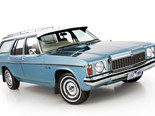
Holden HZ Kingswood Wagon - Buyer's Guide
13 Jul 2017
Holden's HZ Kingswood SL may have been the last of the line, but it was also the best

Studebaker Wagonaire 1963-1966 Review
22 Jul 2017
Studebaker may have been an automotive minnow, but the Wagonaire proved it could still come up wi...

- New & Used Trucks For Sale
- Australasian Transport News
- Owner Driver
- Australasian Bus & Coach
- Deals on Wheels Mag
- Earthmoving Equipment For Sale
- Plant Equipment For Sale
- Earthmovers & Excavators Mag
- Farm Machinery For Sale
- Farms & Farm Machinery Mag
- Unique Cars For Sale
- Unique Cars Mag
- My Searches
- My Shortlist
The item you are attempting to add to compare is a different subtype to the items(s) in your list.
Only items of the same subtype may be compared.

Gallery: Muscle Car Restorations Replaces The Trunk Floor ...

Gallery: The Snow Man Relied on Cragar
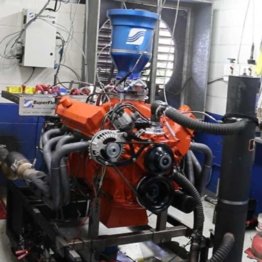
Videos: Buttoning Up a Bulletproof 631HP 505CID Stroker ...
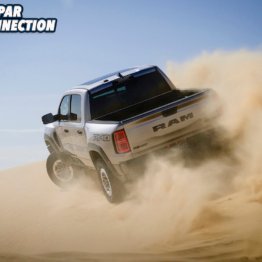
Gallery: 2025 Ram 1500 RHO The Hurricane-Powered Performance ...
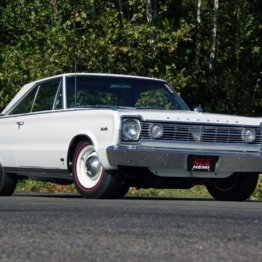
Low Earth Orbit: Danny Holovacko’s 1966 Hemi Plymouth ...

Gallery: The Collision Repair & Paintwork Concludes on ...
Gallery: aussie mopars part one: the chrysler valiant.

1962. The Beatles release their first recoding. Brazil wins the World Cup. Andy Warhol paints a can of soup. US President John F Kennedy announces plans to send American Astronauts to the moon, following the success of John Glenn’s orbital spaceflight. And Nikita Khrushchev, First Secretary of the Central Committee of the Communist Party of the Soviet Union, installs nuclear missiles in Cuba.
In Australia, the 10 million strong population still trades in pounds, shillings and pennies. Prime Minister Robert Menzies oversees the federal voting rights of indigenous people as well as Australia’s entry into the Vietnam War, and a new car makes a wildly successful debut: The Chrysler Valiant. That nomenclature may sound strange, and indeed the seemingly random and chaotic mixing of brand and model names from under the Mopar umbrella is a feature of the Chrysler Corporations’ presence in the land down under.

Above Left: RV1 Valiant, Image: Flickr Above Right: RV1 Valiant, Image: Pintrest
Assembled in Australia from knock down kits based on a combination of trim levels of American Plymouth Valiants, the Chrysler RV1 or simply ‘R Series’ Valiant was an instant success. Market placement played a huge role, as the R Series Valiant was supplied with the larger 225 cubic inch slant six instead of the usual 170, and 14 inch wheels were fitted as standard.
As a result, power, ride and handling were far ahead of the competition, more than justifying the slightly higher price and casting the Valiant as a desirable premium product. The initial batch of just over 1,000 cars sold out very quickly, setting the scene for the next few years as supply simply could not keep up with popular demand. Chrysler Australia had hit upon a winner.

Above: AP3 Chrysler Royal, Image: Flickr
In order to fully appreciate the impact of the Valiant’s introduction to Australia, the context of earlier history is required. Chrysler did have a presence in Australia before 1962, and a fairly extensive one at that. Local production has roots right back to 1928, when bodies for imported Chrysler chassis were built by the T.J. Richards & Sons outfit.
1935 saw the formation of Chrysler-Dodge-De Soto Distributors Australia, by a group of previously independent agents. A controlling interest in T.J. Richards & Sons was purchased, and production began on the country’s first all steel sedan bodies in 1937. World War II soon arrived and like virtually all manufacturing firms, production was quickly refocussed on the war effort.

Above Left: AP5 Valiant, Image: TradeUniqueCars Above Right: AP5, Image: Shannons
In 1948 at the beginning of the post World War II boom, General Motors’ Australian subsidiary Holden produced the 48/215 sedan, otherwise known as the FX Holden. This was the auspicious beginning of genuine local manufacture of cars in Australia.
After retooling for automotive production in 1945, Chrysler-Dodge-De Soto Distributors was ultimately acquired by the Chrysler Corporation in 1951, and renamed Chrysler Australia Limited. The Mopar marques now had an official Australian operation, fully backed by the USA.
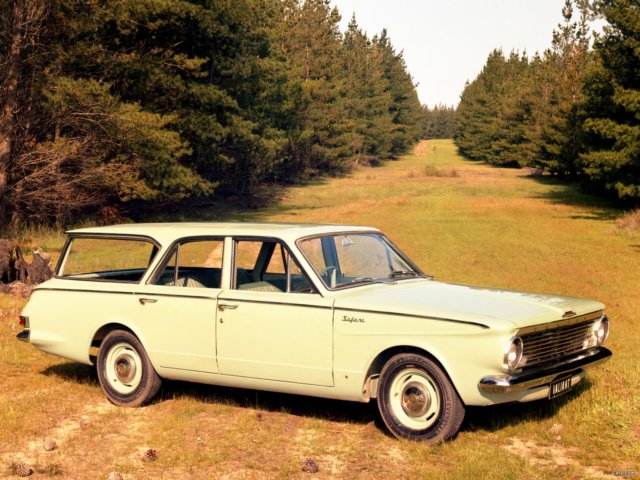
Above: AP5 Safari, Image: FavCars
Throughout the 1950s, a variety of fully imported, locally assembled and partially locally produced American based cars were sold by Chrysler Australia, and chief among them was a prime example of the badge engineering to come: The Plymouth (and to a lesser extent DeSoto and Dodge) based 1957 AP1 Chrysler Royal.
Built around a 1953 U.S. Plymouth P25 platform, the AP1 and subsequent AP2 and AP3 Chrysler Royals had a mixture of parts and body styling from later model Mopars. The first AP1s were powered exclusively by 230 and 250 cubic inch sixes, and later in the model’s production run the 313 cube Poly V8 was added as an option. They were available with power assisted brakes and power steering, luxury advancements for Australian cars at the time.
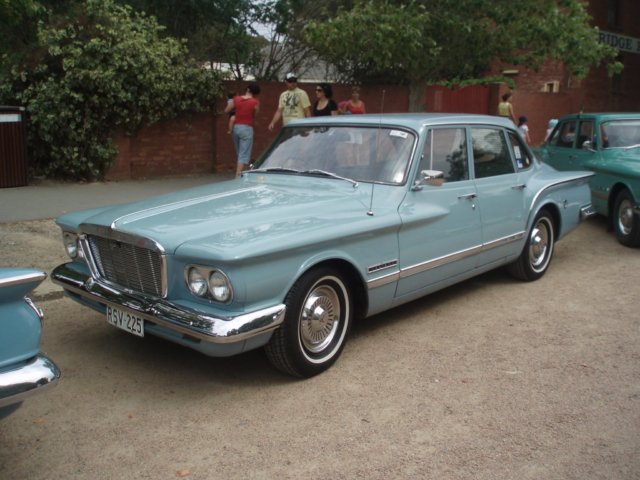
Above Left: SV1 Valiant, Image: Flickr Above Center: SV1 Valiant, Image: Flickr Above Right: SV1 Valiant, Image: Flickr
The AP2 replaced the AP1 in late 1958, and was mostly composed of cosmetic changes and some suspension upgrades. 1960 brought the final Royal, the AP3, which was produced all the way into 1964. This model featured more substantive styling changes, including an extra pair of headlamps underneath the prior model’s single pair.
The instrument cluster went from round to rectangular, and the 3 speed Torqueflite Push Button automatic transmission replaced the two speed. Wagon and half ton pickup (or ‘ute’ in Aussie-speak) variants of the Royal were also made, but the wagon in particular sold poorly, and the ute slowly enough that its production did not last as long as the much more popular sedan.
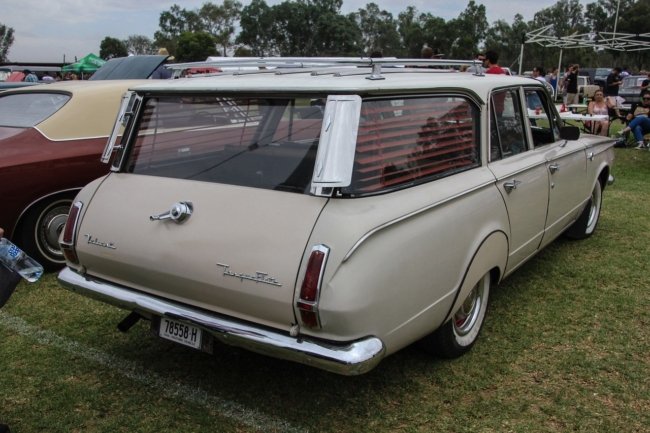
Above: AP6 Safari, Image: Pintrest
In 1960 Chrysler Australia began local assembly of the Dodge Phoenix, based on a Dodge Dart with various Plymouth parts. These were a cut above the Royals, with their 318 engines and more modern stance. In time they outsold the Royals and the regularly updated models were available through to the early 1970s. But ultimately all of these larger Aussie Mopars were overshadowed by the introduction of the compact R Series Valiant, and the models that succeeded it.
Following those 1,000 R Series Valiants were the very similar S Series models. Over 10,000 were sold from late 1962 into 1963, despite a price hike. Various changes somewhat “normalised” the S series from its slightly radical predecessor, such as the removal of the fake spare wheel moulding in the trunk lid, circular tail lights replacing the more exotic fin mounted units of the RV1, and a column shifter in place of the long looping floor shifter for the manual cars.
Automatics remained pushbutton, and a number of mechanical improvements were made such as better brakes and chassis lubrication, and importantly for Australia a larger gas tank to accommodate the relatively thirsty slant six.

Above Left: AP6 Wayfarer, Image: J Glass For Classics Above Right: AP6 Wayfarer, Image: Flickr
Mid 1963 brought the AP5 Valiant, with a lot more local content and manufacturing, including the body. A new purpose built factory was commissioned for this model, and the range grew. The AP5 was now also available in a more luxurious Regal trim, and a station wagon known as the Safari. Styling continued to move in a more conventional direction, and a host of mechanical changes were made. Nearly 50,000 cars were made, but demand was higher.
The AP6 Valiant introduced in 1965 received a very minor facelift, with the major styling change being a more interesting Barracuda style front grille. In yet another progression to convention, the pushbutton auto was dropped in favor of the industry standard column shifter. The model range was expanded further, with the addition of the Wayfarer ute, to compliment the sedan and wagon.
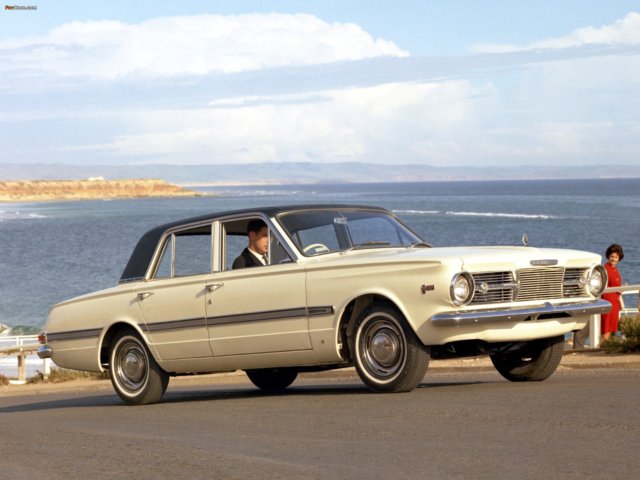
Above: AP6 Valiant V8, Image: FavCars
It was the AP6 model that ushered in the first substantive engine changes to Australian Valiants. The slant six was given a bigger camshaft, and was now also offered in a double barrel carburetor 160hp version. But of most significance was the addition of the 273 V8, an option that gave the Valiant a top speed of around 110 miles per hour.
This put it far ahead of the competition. Despite being available only with an automatic transmission, the front bucket seats and a short throw floor shifter added to the performance character of the car. Australia’s horsepower race had begun, and Chrysler Australia had both kicked it off and taken a firm lead.

Share this post

DJ Middleton
DJ Middleton is an irredeemable hoon who retired from motorcycle racing only to find that life in the fast lane still beckons. He has a particular affinity for modified cars, sports bikes and PWC. He can often be found at speed on the sparkling blue waters of tropical Queensland, Australia.

It looks like you haven't added any items to your cart yet.

Category : Chrysler Valiant (AP5)
Media in category "chrysler valiant (ap5)".
The following 108 files are in this category, out of 108 total.

- Chrysler Valiant (Australia)
- Uses of Wikidata Infobox
Navigation menu
Valiant Spotters Guide
On 30 May 1963, Chrysler Australia produced the first fully Australian manufactured Valiant, the AP5. In February of that year,[2] Chrysler Australia had begun work on its new $36 million Tonsley Park facility in South Australia, where it could boost annual production to 50 thousand cars. The new plant produced its first Valiants on 31 March 1964.
The AP5 ("AP" for Australian Production) was an entirely new design with only the four doors, windscreen, and front guards shared with its U.S. counterpart. The Slant 6 driveline was retained, but the AP5 was considerably more straightforward in styling than its R- and S-model antecedents. With high local content and specifications optimised for local conditions, this new Valiant strengthened the brand's position in the marketplace. In November 1963 an AP5 Safari station wagon was released. An upmarket Regal version was also introduced to the range.
Total production of the AP5 range amounted to 49,440 vehicles.

Automotive History – The Valiant in Australia, Part 1

( first posted 1/16/2015 ) When writing the post about the 1972 Chrysler by Chrysler the other week, I thought I should explain why there was a full-blown Brougham version of a Valiant. It was not easy to explain its different position in the market and how the car ended up very different as well in what ended up being just two short paragraphs, and in fact I realised that the Valiant background was about to take over the post and cut it short with the idea to do another post allowing for more detail.
Now before we start, I must confess that the ute above was not actually built by Chrysler Australia, the first Valiant was a four door sedan only here, I saw it at a car show five years ago. It was built using panels from a later-model ute.

1937 Dodge ute
Chrysler-Dodge-De Soto Distributors (Australia) Pty Ltd was formed in 1935, as a consortium of 18 independent importers to achieve a stronger operation than individual importers in each state. The company was taken over by the Chrysler Corporation in 1951, together with the body-building firm TJ Richards that had been building car bodies since 1913. Import tariffs meant that very few cars were imported fully built-up, rather it was usual to have local assembly from kits with local bodies – yes there were utes!

1956 Plymouth Cranbrook ute
After the initial post-war seller’s market eased Chrysler struggled to compete with Ford and GM which both sold a range of American and British cars, for which Chrysler had no competition as the involvement with Simca did not occur until 1958. A important shift took place after 1948 when the Holden building towards taking over half of the entire market by the end of the fifties. The requirement to build cars locally exposed manufacturers who sold in small numbers, and an early effect was Chrysler carrying over the 1953-54 Plymouth, Dodge and De Sotos through 1955 and 1956 because there had not been sufficient return on tooling costs. Ford would do the same thing running the 1955-56 car for another two years, but the 1957 Chryslers would not see Australian production either.

Chrysler Royal AP2
Instead there was to be an Australian market-specific Chrysler model that was created by adapting 1956 Plymouth style front fenders, a wrap-around rear window and fins to the basic 1954 body. The Royal was a little smaller than other US cars by that stage, particularly in width, but much larger and heavier than a Holden. Although it was initially planned to be built as a Plymouth, Dodge and Chrysler, this fragmentation was soon recognised as folly and the car would be sold only as the Chrysler Royal from February 1957 with the model code AP1 (for Australian Production 1).

Chrysler AP3 Wayfarer ute
Initially the cars came only with the 230/250 flathead sixes, and a 313 V8 was soon added. With two updates (AP2 & AP3) at approximately two-year intervals mainly involving trim changes and the addition and then removal of ‘saddle’ fins the car would be built through to 1964. However only 13,600 cars were built in this time, split roughly equal between models (4,748/4,044/4,444 – note the AP3 production run was much longer, showing a ‘normal’ sales drop over a long model run). This included the Plainsman wagon, Wayfarer ute and also commercial chassis, and together with a relatively small number of full-size car sales it was obvious that something needed to be done.

Chrysler Royal AP2 and contemporary Holden
Luckily for both Chrysler and Ford Australia, the new US compacts came along at just the right time to form effective competition for the Holden. In 1960 one of the new Valiants was brought out for evaluation, and of course it was a very competent vehicle so there is no need to introduce it again. The big issue to be faced was the six slanted towards the drivers side on what would have to be a right-hand drive car. The steering box would have to find a home together with the coil, distributor, fuel pump under the engine and the gear linkages also posed a problem for the conversion.

The National Motor Museum’s 1963 Holden, 1963 Valiant and 1960 Falcon
The introduction of the Valiant in Australia did not go to plan however, and with delays insurmountable the decision was taken to import 1,000 CKD body kits to get the car to market sooner. January 1962 would see the launch of the RV1 or R-series car to an enthusiastic response. Local testing had seen some adaptations made such as increasing the wheel rim size to 14” for better ground clearance and the decision was taken to only offer the 225 ci engine rather than the 170. To keep things simple only a four-door sedan was offered.

R (foreground) and S series Valiants
Production got underway properly with the SV1 Valiant in March 1962, bringing with it numerous changes. Externally the toilet seat trunk lid was gone along with the cats-eye tail lights, replaced by round units and the radiator grille was different.

Apologies for the poor photo, but it does show the rather tortured floor-shift gear lever of the R series
A manual gearbox shift moved from the floor to the steering column, there were larger brakes and the fuel tank now held 11.7 gallons (53L/14USgal). Sealed ball joints and tie rods reduced service costs. This time the run was just on 10,000 units and again the cars sold in double-quick time. Thanks to their distinctive style, the early Valiants have always had a strong following and many survive.

AP5 Valiant
The next step was the AP5 Valiant launched in May 1963, returning to the Australian Production nomenclature of the Royal. This signified some significant deviations from the US car, such as a flat rear window, higher trunk lid and unique grille. Rear sheetmetal was stamped locally, while the front clip came from the US in a move intended to enable easy adoption of any facelifts. Again detail improvements were made to the mechanicals and an upmarket Regal trim was added to combat the Holden Premier and Falcon Futura.

AP5 wagon (possibly with modified tail lights)
A wagon was added for the first time later in the year, called the Safari and notable for its load capacity: the floor was 18” longer than the competing Holden wagon with seats folded. The improvements together with more conventional styling saw waiting lists grow, despite just under 50,000 cars being built in 22 months. At the same time the new Tonsley Park factory in Adelaide’s south was under construction to increase capacity.

AP6 Valiant
March 1965 saw the AP6 Valiant launched, with a more expressive grille similar to the US Plymouth Valiant and Barracuda but more importantly a full-width dash fascia inside. Two important additions to the range followed, a Wayfarer ute and the 180hp 273ci V8, the latter came with power-assisted brakes standard although discs were not yet available.

V8 sedans were identified with a vinyl roof in addition to badging, while station wagons had a roof rack. An illustration of how basic cars could be in this era is the announcement that windscreen washers were now standard across the whole range.

AP6 Valiant Wayfarer ute
Today the first model ute is a rare sighting as only 2,000 or so were built.

VC Valiant Regal
The March 1966 VC Valiant was a major facelift and had significant changes with available disc brakes, a new all-synchro manual gearbox and the Torqueflight being replaced by the Borg Warner auto used across the Australian car industry. This also applied to the manual gearbox and rear axle and was part of the push to meet the 95% local content required under the 1964 Menzies Local Content Plan; this would have implications later on. Air deflectors were fitted each side of the station wagon tailgate to prevent dust accumulating on unsealed roads.

This was probably the peak period for the Valiant, with a more powerful 6-cylinder engine than the competition and for a few months at least the only V8 available. Overall the Valiant was more upmarket than the Holden or Falcon competition, although the Premier and Fairmont respectively were worthy alternatives with their own strengths.

At this time the Valiant was also exported to the UK to rather ambitiously start taking over from the Humber Super Snipe. While probably the best option available to Chrysler, who now owned the Rootes Group that built the Humber, replacing a pukka luxury car with a car based on a cheap economy model was a tall order and it never really caught on. This view also shows the distinctive tail lights of this model (note the wagon and ute retained the previous styling).

Surely the most famous Australian Valiant must be the “Never Never Safari Tours” VC Wayfarer that appeared in the 1986 film Crocodile Dundee, driven by the great John Meillon as Wally. The car was in the Fremantle Motor Museum, in the port suburb of Perth in Western Australia. The museum has since closed after the lease on the wharf-front was not renewed by the Port, I am not sure where the car is now.

The VE model Valiant introduced in October 1967 adopted the new generation body from the USA, although it was a mix-and-match of the 108” Valiant wheelbase and Dodge Dart front sheetmetal. There were still significant variations from the US car though, with a unique roofline and rear window. Responding to the competition’s more powerful engines a 2-barrel 160 hp of the 225 slant six was available.

There were a lot of new safety features across the board and a new top trim, the VIP which had a vinyl and small rear window to distinguish it externally, together with bucket seats featuring adjustable head rests on the inside. The three chrome strips on the rear fender indicate a v8 engine.

The Australian Valiant continued to be available as a Safari wagon as well as a Wayfarer ute because while Chrysler Australia was still selling the full-size Dodge Phoenix it was in fairly small numbers, and they had not yet introduced the Hillman Hunter (that looked like a shrunken Valiant). The Valiant was their bread-and-butter car and needed to offer a full range of body styles. Full in the Australian sense that is; there was no interest in a large 2-door sedan, while a 2-door hardtop would be trialled later in response to the 1968 Holden Monaro.

The VE would be the first Valiant to win the prestigious Wheels magazine Car of the Year award and was a much-needed response to the 1966 HR Holden and XR Falcon, with the latter now having a more spacious interior, powerful V8 option and the long-wheelbase Fairlane luxury version.

The VF model introduced in March 1969 would address some of these issues with a new long-wheelbase (112”) Chrysler VIP model (not badged as a Valiant), a 210 hp 318 V8 to replace the 273 and air conditioning as an option. Unlike the Aussie Fairlane, the extra wheelbase of the VIP was done the “proper” way by lengthening the rear doors instead of between the door and wheel arch. The VIP also gained dual headlights to further distinguish it from lesser variants, which including a new Regal 770 trim. Also note that the front turn signal was now set into the top of the fender.

The first of two other significant introductions was the Pacer performance model which had 175 hp thanks to higher compression, a 2-barrel carb and less restrictive exhaust. The car came with a tachometer, finned drums (optional power discs) and lowered suspension – plus some stripes of course! The manual gearbox shifter was on the floor, but perhaps because it required fewer changes, the shift pattern placed reverse where you might expect to find 1st, which was actually below it.

Top speed was up around 8 mph while the ¼ mile was done in 17.6 seconds – regarded as good then (for a 6-cyl), but glacial now! The Pacer represented Chrysler joining the Falcon GT and Holden Monaro GTS on the race track as well as at the traffic lights, but as with some of the US Mopar models being a 6-cylinder it was a cheaper option to purchase, fuel and insure.

Six months later the Hardtop was added to the lineup as Chrysler’s response to the Holden Monaro. It was built using imported Dodge Dart body panels from the firewall back combined with the new local front sheetmetal. The Dart’s 111” wheelbase and lengthy tail makes it the longest coupe ever built in Australia, even compared with the later model Valiant Hardtop.

The VG Valiant of August 1970 was the last new model for this generation, with another facelift featuring rectangular headlights this time and wrap-around tail lights. There were various improvements such as the first standard air conditioning on an Australian car for the VIP but the big news was the $33 million new engine, unique to Australia although I gather it was briefly considered for use in the US also.

It was called the 245 Hemi as the name had some recognition in Australia despite the 426 not reaching these shores (on the street at least), mind you the combustion chambers were not truly hemispherical, as Paul has previously explained . The base single barrel had 165 hp and 235 lb-ft, both representing a useful gain over the 225 slant six, and it was 40 lb lighter.

The Pacer programme was expanded and now had the choice of a 2-bbl making 185hp or optionally 195 hp, or even a 4-bbl version with 235 hp. The Hemi Pacer dropped the quarter mile time by an impressive 1.2 sec over the 225, to 16.4 sec.

The only thing more confusing than that was the different color scheme that the different engines were painted – it was the 1970s after all! The engine above can be identified as a 195 hp version thanks to the yellow painted rocker cover and air cleaner instead of black for a 185 hp Pacer or silver on the standard engine. Mind you once the bean counters found out that the different paint schemes cost more, they were quickly dropped.

The brakes were upgraded to ventilated front discs, albeit without power assistance, and many other performance or racing-oriented options were available. This included a 35-gallon fuel tank (159L/42 USgal) for the sedans that were to be raced in the Bathurst 500 mile race.

Another new option for the Pacer was the Hardtop. It is worth noting the ‘way out’ paint colour names typical of the era; Bondi Bleach White, Thar She Blue, Little Hood Riding Red, Hot Mustard and Hemi Orange.

This brings us to the end of part one of the story of the Valiant in Australia as well as cars immediately identifiable as a Valiant for North American readers; next time we will get into the new generation that ran through to 1981, longer than Chrysler itself in Australia!
Part 2 – The Valiant In Australia
Additional reading:
https://www.curbsideclassic.com/blog/cohort-sighting-chrysler-valiant-vg-hemi-six-power/
www.curbsideclassic.com/blog/cohort-outtake-king-richard-down-under/
82 Comments
A great overview. Just a few comments.
The taillights on that AP5 wagon are stock. There were several styles used, probably corresponding to the availability of new parts from the US. I remember being surprised by the taillight change at the time!
We always called the VIP the Valiant VIP. Even a mate who owned one called it that. I never knew they weren’t “supposed” to be Valiants! But then, as Holden later found with the Statesman (called Holden Statesman by the great unwashed, though GMH insisted it wasn’t a Holden – until they gave up), Aussies love pulling the pretentious down a peg. Must be in our genes or something.
VE VIPs had the same wheelbase as all other Valiants; the stretch came with the VF. Likewise the smaller “limo-style’ rear window came later – not sure whether that was the VF or VG. To Aussies not up with the latest US styles, the smaller rear window seemed a backward step to the Valiant’s excellent all-round visibility. Little did we know the real backward step that was to come with the new body!
Heaps of stories I could tell, but I’ll let someone else have a say!
Pete, i remember the first NZ Valiant VIP i ever saw here.. it was a black vinyl roofed VF with very distinctive ‘318’ badging. The rest of the car was in bright metallic mid-forest green colour and yes, it DID have the smaller rear window opening! That was during late October 1969 at the beginning of Bayview Road on Maramaratotara Bay Whitianga on the Coromandel, and I saw the impressive thing parked-up there out of the upstairs window of my father’s beach place under construction at the time, during a break between banging-in the nails in the tongue and groove flooring.
I was disappointed the VG 318, which my father bought the following July from Ridley Motors in Taupo, did NOT have these same large distinctive engine identification badges, but rather more discreet downsized rectangular ‘318’ tags on the side of each front guard and on one side of the rear tailgate. However engine power had increased from 210 to 230 horspower with the VG, so I guess that was some consolation lol.
The tail lights are correct because that is an AP6 not AP5. You can tell by the front fender return creaseline which is higher than a AP5. Great article.
THANK YOU ! .
Lovely cars, all of them .
I’d think a Valiant Ute would make a good Shop Truck .
I saw the Valiant Ute in the movie , Crocodile Dundee. Chrysler in the U.S, didn’t have a car pickup like the Chevy El Camino or Ford Ranchero. Very interesting to see the differences in Australian and U. S. models. Keep em coming ! Another vehicle I thought was interesting in that movie was the truck they rode into the outback in. The windshield is recognizable from the International in the U. S. but the front end style is different.
Don’t forget the L-body based Dodge Rampage!
Of course, it came along a bit later, after the ford offering was cancelled if I remember correctly.
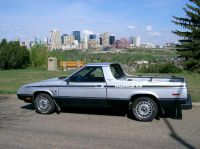
Excellent article. The Australian cars became more different to the American ones with every new model. My favourite would have to be a 1967 VE Safari wagon with 318 and Torqueflite column. Just a beautiful Australian car that anyone could drive today in modern traffic.
I agree – it is such a shame that the VE wagon never made it to North America. A ’67-’76 Dart wagon would have been an awesomely practical car.
They brought the wagon back for the Aspen/Volare and had it for the ’66/earlier Darts, so clearly its absence was an error in judgment.
Agreed. Hard to fathom, actually, but then in the US one could buy a “mid-sized” Coronet/Belvedere wagon for not all that much more money. Still.
It wasn’t just Chrysler. GM dropped its Chevy II wagon after 1967, while the Falcon wagon survived until 1970 only because the ’66 and up version shared its body with the Fairlane. I think the official explanation was that intermediate wagons had taken away so much sales from compact wagons that compact wagons were no longer needed, but you have to wonder how much of it was manufacturers just preferring to upsell customers into intermediate wagons. The 1968-72 Chevelle Nomad wagon appears to have existed purely as a placeholder for customers who were looking for a wagon priced below the normal intermediate range.
Almost as soon as these wagons were dropped, sales of small cars began to rise again, and wagons would prove to be popular in the subcompact class in particular, where they represented maximum space utilization in a small exterior package. Chrysler didn’t have a domestic subcompact, but I’m sure they saw the Aspen/Volare wagon as applying the same principle to the next size class up. Ford would also re-enter the compact wagon market with the 1978 Fairmont.
Awesome article. Keep up the great work. But as I posted in the other article, AUS cars are, to me, like American cars made by aliens from another planet. Look so familiar, yet so different. And thats the beauty of this site; all corners of the globe get to see what the other corners got. Would like to see a few more technical articles here, and I am very tempted to write some. But not sure how they would go over. I have been here since day one, and my personal feeling MOST here would rather just look at pictures and reminisce. I could be wrong. Or right.
Every time I see a picture of an American Valiant, it looks alien to me!
I’d certainly be interested in a little heavy tech! But I understand…anytime I’ve thought about writing about the Jacobs Brake or something I stop and wonder if anybody would actually like to read that, or, if I really want to write in shop manual technical style… 🙂
At least I’ve got less of a headache following this than the Aussie Fairlane article.
Tech articles? Bring them on! We’ve done some,, maybe not super-technical, but I’m sure that a healthy percentage of the readers here would be very interested. I certainly would 🙂
Okay then. Mine would not be super tech either, no need to bore readers with all the details. But this could be fun. And I look forward to meeting you Paul, in person someday. You are in Eugene, I am in Tigard. How hard could it be. And you could take pics and write up my ’83 Ford Ranger 5.0 4×4 from your prospective 🙂
“How hard could it be”
Isn’t that Jeremy Clarkson’s favourite phrase? 🙂
I think you’re wrong here ;
I see many obviously younger folks commenting but obviously they’re not making the Old Folks comments us Geezers do….
I am always learning new things from the Younger Folks here when I click on newer vehicle articles , I don’t often as moderns have little interest to me .
For a country with the population of Texas to be designing and building their own cars is amazing. Think of them more like mass produced kustom cars perhaps, suffice to say I for one am eminently proud of the product this country turned out and the innovative designs delivered.
The 1953-54 Dodge and De Sotos mentioned were in fact badge engineered P25 Plymouths. The picture titled “AP5 wagon (possibly with modified tail lights)” is in fact an AP6 as it has the raised spear profile on the front fenders. Tailights on AP6 Safari wagons are a bit confusing because some used Canadian round lights which were later replaced with vertical lights as seen on the VC wagons and utes and AP6 utes.
Love the article John. As a CC, I always preferred a 60s Valiant to the other ‘big three’. I had an AP5 Regal Safari with the 225 and push-button auto and a VG Hardtop with the 245. Both were just so much fun; beaters but solid. The VG was driven from Sydney to Melbourne and back along the coast road one xmas with no problems and many great memories.
Question for the cognoscenti; I’ve always known the ‘AP’ designation to stand for ‘Australian Production’, but I have read that for the early models it actually stood for ‘Australian Plymouth’. Can anyone clarify?
Please enjoy Stirling Moss introducing the VG model…
Don the AP1 originally stood for Aust. Plymouth 1 when they were still going to build the AD1 Dodge and AS1 De Soto.
I should have mentioned the Stirling Moss ad, not a bad celebrity endorsement!
Thanks John.
Quick story, perhaps apocryphal, on Stirling and the VG. I worked at the same ad agency (Young & Rubicam Adelaide) that created the campaign, although I was there many years later. There was an oft-told legend (we had Mitsubishi at the time so the agency was still full of gear-heads) that the concept of using Moss to launch the VG was presented to the client, one of whom declared ‘You’ll never get him!’
To which the agency replied; ‘Shall we ask him?’, opened the boardroom doors and in walked Stirling Moss himself.
That’s fantastic! Imagine if Chrysler had said “no, not interested in him”…
The VE rear end is interesting as it closely resembles (but doesn’t seem to be identical to) that year’s US Barracuda and the next years Satellite.
“Little Hood Riding Red” is my new favorite color name! 🙂
It does, however, use Barracuda taillights. Always thought that was a neat touch, but I never liked the VE front end. Too square and austere. They should have taken the Dodge Dart grille when they pinched its fenders and hood.
Excellent write up. I’ve had a lot of exposure to Aussie Valiants lately, as my brother-in-law very recently purchased a 1970 VG Hardtop, and I’ve been helping a friend with the restoration of his 1969 VF VIP. My attention used to be limited to only the Fords and Holdens of the era, but now I’m an even bigger Valiant fan.
One thing I really love about Valiant Pacers was the technicolor engine bay, with the brightly coloured air cleaner, valve cover, and intake manifold. Fun details like that really set Chrysler apart.
I saw the Crocodile Dundee ute back when it used to be at the Fremantle Motor Museum. I’m also well familiar with the York Motor Museum, as I worked in York for several years while I was going to college. The motor museum was just a few buildings down. For a small museum they have some very auspicious cars in their collection, including a very gorgeous Tatra T 87.
Marlin you are correct – the photo was from the Fremantle museum not York. It was taken almost 10 years ago. My photos from the York museum would have been on film a year or two earlier.
I’m not sure where the ute is now, but given both the Fremantle and York museums feature Peter Briggs’ cars it may be at York – I will have to make a return visit next time I am over there if possible.
Love these early Valiants- they seem to be incredibly durable, and handsome cars as well! The young girl who lives next door has an original AP6 sedan as a daily driver, painted in Granny’s bathroom green. I think I need to get a nice VG series to keep it company.
Thanks for the reminders, great piece neatly summarising an optimistic period. Full disclosure: I’ve owned a VE standard sedan (no heater!), briefly a VE VIP (with factory shift lever keylock) and a fully loaded VG VIP (sadly with rust beneath the padded vinyl roof). Enjoyed every one of them. All sensibly sized cars with great visibility and easy cruisers.
Valiants seemed to survive better – relative to the numbers sold – than Fords or Holdens, it also seemed the original owners held on to them longer. I’ve no scientific basis for this beyond observations during my first 25 years in inner city Sydney.
On the topic of the VE VIPs intended to replace the Super Snipe Series V, this situation led to an acquaintance stumbling across one in Paris the sometime in the 80s. He was under the influence at the time and initially thought the vision a side effect of the merriment. Apparently rust was their big killer, the UK got the wagon too.
Tangentially relevant thread: while weighing up what exactly to do with the Humber, Chrysler considered installing the 273 V8 and went so far as a pilot run, one of these cars was offered for sale back when there were still classified ads to read.
A few 273 2 barrel cars were made and some 318 4 barrels.
Those Humber Super Snipe V8s would still exist, I think there is one in Sydney for example. The problem there was by the time this happened the basic car was almost 10 years old.
I think you are right on Valiants getting better care on average too.
They made 10 V8 Humbers before the idea got shelved they are mostly still around, though many home grown ones are out there too.
“Valiants seemed to survive better – relative to the numbers sold – than Fords or Holdens… ”
I most definitely agree. As a teenager in Melbourne at the time, I think part of the reason is that they were less likely to get into the hands of teenagers like me as a first car. I remember the kid next door getting a VF Pacer when he wrote off his ’62 Falcon, but that sticks in my mind because of how unusual it was. Most kids were either Holden fans or Ford nuts. Monaro GTS! How about that GTHO Falcon! If you were keen on Chryslers it was sort of, “Oh, them? Really?”
Back in the day Valiants were regarded as a bit more conservative and upmarket compared to the Holden and Falcon. That image must have worked against them sales-wise though, as with the VE they ran an ad in the car magazines pointing out that a similarly-equipped Valiant was within $3 or $4 of Holden and Falcon pricing. To the bitter end Chrysler tried to overcome, shall we say, the stigma of superiority.
In the 70s I owned a 1969 “bottle green” Valiant Signet 2 door sedan (the top trim line when it was built). Being a Plymouth fan I love reading about these “alternate universe” Chrysler products. If I could find a nice and yet reasonably priced Valiant wagon…I would buy it. Better yet would be to win the lottery and buying a 67 or newer Australian Valiant wagon. In today’s U.S. market, that Valiant wagon would be the perfect size.
Interesting that these Valiants would “preview” Chrysler’s use of turn indicators ABOVE the head lights…a styling detail that would (eventually) appear on the American Chrysler Le Baron.
Neat, the way the brake booster moves from one side of the firewall to the other….depending on the engine options.
Hey Howard. Just to clarify the brake booster positioning, up to the 1969/70 VF, Australian Valiants used VH44 in line boosters with all engines, located on the passenger side firewall. As from 5/70 VG onwards, these gave way to the full boosted PBR system, where the booster was before the master cylinder, hence being located on the driver’s side. I know of at least one 68 VE wagon that’s made the journey and now residing in the USA, belonging to a fella by the name of Kenny, I think from down GA way. He also took an AP6 ute home, which he has since sold on. Pic of Ken’s VE parked at Home Depot attached (I hope)
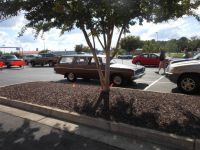
Nice one Carl. I imagine that the VE wagon would get less attention as being a unique import these days, compared to if it had been imported in 1968!
Actually John, Ken gets plenty of attention in “Sal Safari”. Locals easily see the family resemblance to the 67/68 Dodge/Plymouth, and it gets a fair bit of exposure, as it’s his daily driver. Still RHD too.
Boosted brakes were only optional on Valiants up till the VJ model when it was standardised that includes the performance models you had to tick the box to get a booster.
I’m a little in love with the turquoise wagon on Torq-Thrusts…oh wait. Dang it, now I’m going to have to try to find a set of small bolt pattern Torq-Thrusts!
Trust me , many here would love to read all about Jake Brakes and Mico Brake Locks , Top Cylinder oilers on and on and…
Your writing style won’t be boring FSM style , I know this in advance , please do it .
Fine set of pix and descriptions.
Seeing these ‘parallel universe’ cars always makes me wonder why the US companies didn’t make more use of their OWN variations. AMC could have answered Euro GTs with its OWN Argentine Torino. Chrysler could have answered the El Camino and Ranchero with its OWN Valiant utes.
Great overview, a fun read on a weekend morning. I’ve been fascinated with these “parallel universe” cars since I read an article titled “South American Americans” in a 1981 issue of the old “Car Exchange” magazine. They did an article about the early Chrysler Royal around the same time.
I wonder if perhaps the front end styling of the AP1 Royal was originally done as a proposed 1957 Plymouth facelift if the ’55-’56 body had been continued for another year.
The homemade ute in the top picture would be my pick of the litter although any of the six cylinder utes or wagons here would make me happy.
Startled to see that the hemi six was upright. What’s the story there? Just to make it fit better between those narrow fenders?
+1. Was a little disappointed it was not factory.
The Hemi six started as a US pickup motor project, but projected sales revealed it would not be economic to build a new engine. Chrysler Aus picked up on it from there. I think it was just easier to build an upright engine, the engine bay didn’t change. More that there wasn’t a reason to lean it over I suppose.
I think PN did something on that engine a while back. Don’t remember it being upright. Learn something every day.
This is like a parallel universe, a ChryCo Twilight Zone. It’s even stranger than Canada.
Terrific overview – always fascinated by the alternate universe of Aussie cars.
My brain was completely stuck on Studebaker Lark with the lead photo. It wasn’t until I studied the rear quarters a bit more that I could see the Valiant.
It was great for a guy who’s had as many A-body cars as I have to see all these never-seen-before Valiants at one sitting. I really have to say that my Saturday morning is being well spent today.
Hmmm, I wonder if that AP3 Wayfarer headlight and grille would fit on my 55 Plymouth Belvedere. That is really cool looking. So different, yet so familiar.
Or even the AP2 grille – build your own small Desoto!
There was a DeSoto version of the Dart/Valiant in South Africa never seen one in the metal
There is one photo I saw of these South African DeSoto Rebel, it’s only a Lancer rebadged as a DeSoto http://www.linnea.com/~banne/ as well as some brochures scans of a 1962 Dart/Polara rechristened DeSoto Diplomat and Lancer rechristened Rebel http://www.forwardlook.net/forums/forums/thread-view.asp?tid=4232
The green AP6 wagon is my car, which made it’s first trip last weekend when that shot was taken. The taillights are factory although I have not yet refitted the badging on the tailgate. Great article all it needs is a Royal Wagon!
Thanks Travis, you’ve done a great job on the restoration! There were quite a few nice Valiants down at Phillip Island.
I will need to find an AP5 wagon to change the photo, otherwise the AP5-AP6 differences are pretty small. I think I have probably seen more imported 1960-62 Valiant wagons than AP5s.
On a similar note, for some reason I had the idea the first ute was the AP5 and was despairing ever finding a photo of one, until the penny dropped – I had photos of a couple of AP6 utes. For there only being <2000 built they get around!
Dad bought a 2 year old 66 Aussie Valiant 6 cylinder as Mum couldn’t get on with his LHD Falcons.It was a cool car and when he passed it to Mum he bought a Dodge Dart 6.We had the Valiant 5 years,very comfortable and reliable
It’s too bad that the Ranchero / El Camino era ended so soon in North America. A Valiant-based small pickup would have been a great iteration of that concept.
but they would have had to use longer coupe doors like the Elclo / Rancho
I don’t think it would have been competitive in the US with the short sedan doors
and if they had have, I would have one in my driveway for sure
The longer doors were never used in Australia, also in the ‘traditional’ Aussie ute format there wasn’t any significant storage space behind the seats as the load bed extended under the rear window to an angled panel parallel to the seat backs.
Love that Safari wagon! I drove a ’65 Barracuda for many years (225) until rust did it in. Bring on the tech too. I’d like to learn more about that Hemi 6 for sure.
The indicators set into the fender tops are a really nice touch on the later models–wonder why no one ever thought of that in the US?
I also do like that first photo ute, homemade or not!
Great stuff… between this and the Fairlane post I’m going to be daydreaming about Aussie cars for quite awhile!!
I’ve heard of the Chrysler Valiant, but because I’m not from Australia, I’ve never seen one in person. If it weren’t for the steering wheel being on the opposite side of the car, it looks almost exactly like our American Plymouth Valiant. 🙂
The floor pan, chassis structure and much of the sheet metal prior to 1971 was borrowed directly from your Plymouth, and to some extent, Darts. Naturally, as mentioned in the article, some changes made to suit our tastes down here 🙂
Were they? I didn’t know that. But then I’ve never driven a Dodge Dart or Plymouth Valiant.
Hey John. Just a point about the VG Hemi Pacer power output mentioned in the article. The “normal” Valiant 2 barrel option (black top in base models and Regals) produced 185HP, the standard Pacer between 195-200, that gain being achieved with the dual outlet exhaust manifold and better air cleaner. Then the E31 option (2 barrel track pack) produced around the 210-215HP mark, and topped off with the correctly quoted 235 horse E34 4 barrel. Another less common engine offered, was the “street pack” 4 barrel, which lacked much of the internal modifications, but had the 4 barrel, east-west mounted AFB Carter. All VG Pacers had the yellow rocker cover and air filter case, except the 4 barrel option with its chrome exposed element type.
Riverside Subdivision, Fenton, Missouri. You’re in our thoughts and prayers……
Valiant isn’t just the name of a street, or the neighborhood park or even a car that was once built less than a mile away. It’s the effort put forth by the residents and the volunteers who came to help sandbag their neighborhood.
The subdivision where most of the streets are named for Chrysler products is what its name implies. It sits directly on the Meramec River which is cresting at an all-time high tonight or early tomorrow. At present nearly all of the streets leading into Riverside are flooded at one point or another.
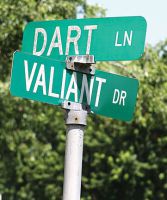
The original Crocodile Dundee ute is actually in the York Motor Museum in WA.
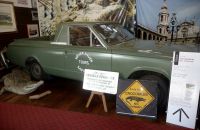
I am lucky enough to have an A81 optioned VG hardtop (Stirling Special) three speed manual on colum, factory valiant sport wheels, factory vynal roof
Great piece. I’m very interested in Chrysler… a bit late maybe… I especially like the old s type… reminiscent of Studabakers… I only recently learned that Chrysler cars were such good quality both here and in the USA…. and good performance too… in the USA they lovingly restore the muscle cars… barracudas etc… I used to like the old dodge Phoenixs too… huge engines and very luxurious…oh I used to like the push button automatic on the s types… cheers😊
They’re unmodified stock items.
This is really fun stuff as I look at the Australian design additions to the American Chrysler automobiles. Thanks
I’m working on a similar article detailing the E. Barrieros company of Spain. They built a Dodge Dart well into the late 1970s, as well as a group of 10 1965 [badged as 1966 cars] Chrysler Imperial Ghia limousines, as Barrieros bought the dies from Ghia when Chrysler pulled the plug on all factory support for the limo. If there is an interest in reading about the Barrieros cars, I could do a write-up here.
Bill, shoot me an email (google Daniel Stern Lighting and you’ll find my contact info); I’ve got a Barreiros resource for you.
Excellent read on the Chrysler’s made in Australia.
I am not 100% sure, but I am pretty confident that Chrysler (Australia) were the first to offer and start production of a V8 (273’s) models in Australia where Chrysler Australia designed an Australian Production/Plymouth (Based on US designs, just tweaked a little) by producing 70% of the car in Australia scaling down the importation of panels and chassis’sThis being the AP6 1965, only 1440 came off the production line from the 43,344 AP6 Valiant’s that were manufactured. Which is what made me buy this piece of Australian History.
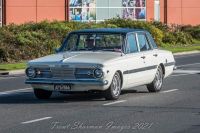
Lord that’s pretty Vince .
hi Australian Production, It makes not fit every things happened C = cHRYSLER , D -= Dodge S = De Soto, P = Plymouth Hence AP = Australian Plymouth , when the the Chrysler Royal was on the drawing board , there were 3 variants , C ,D and P , acorrding to Gavin Farmer P was choosen. now way back into history . the Plymouth division created the Vailiant ………… 1936 p1 was a plymouth that carried on till the late 40`s with P15 all Plymouth ……………………….. Australia choose the P design , in keeping wit then Valiant so your ap5 = AUSTRALIA PLYMOUTH # 5
It is not correct to say “the Plymouth division created the Valiant”. That’s not what happened. The Valiant was originally conceived and marketed in the US as its own marque. In the States—and only in the States—it was repositioned as a Plymouth model for 1961. It carried on as its own marque in Canada through 1966, sold at both Chrysler-Plymouth and Dodge dealers. Elsewhere in the world, it was a Chrysler Valiant, explicitly, or a Valiant by Chrysler; either its own marque or a Chrysler model, depending on the market strategy in various countries.
“AP” certainly meant “Australian Plymouth” when that’s what it was, but the Plymouth brand was not a part of the Australian market strategy when the Valiant came along. Hadn’t been for many years. Does it make sense to think CAL would sortakinda resurrect the brand with a whispered reference in the model designation…? The AP5 was built from scratch in Australia, versus the previous RV1-SV1 models assembled in Australia from CKD kits originating in North America. “Australian Production” makes more sense in that context, don’t you think?
Just to get it on the record, here’s the other end of the homebuilt RV-1 Ute in the pic at the top of this post. This is from SV1Ambo’s Flickr :
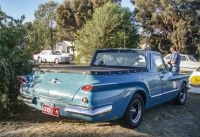
Looks well done to me .
Leave a Reply Cancel reply
Your email address will not be published. Required fields are marked *
Notify me of new posts by email.
This site uses Akismet to reduce spam. Learn how your comment data is processed .

Click for CC’s Privacy Policy

Curbside Classics Archives

Recent Comments
- Joe Fay on QOTD: 1966 Dodge Polara CHP Patrol Car – The Ultimate Police Car. What About You?
- funkcity on COAL: 1967 Tempest OHC-6 – Nice Work, Pontiac!
- Nick Graves on Curbside Classic: 1968 Bristol 410 – Not Your Ordinary Hybrid
- Brett Koeshall on Vintage Snapshots: Cars And People In The ’60s & ’70s – Part 2
- Midsommar on Vintage Review: 1969 Cadillac Coupe DeVille – Golden Goose
- Nick Graves on Truck Show Outtake: 2006 Ginaf X 4241 S Dump Truck – Unpolished Refinement
- Nick Graves on Vintage Snapshots: Cars And People In The ’60s & ’70s – Part 2
- Chris K on COAL: The Cars Of My Father In Law
Copyright 2011 - 2024 Curbside Classics. All Rights Reserved.
TheHEMI.com
Mopar's Infamous HEMI
Skip to content
- Unanswered topics
- Active topics
- Board index
Information
You have been permanently banned from this board. Please contact the Board Administrator for more information. A ban has been issued on your IP address.
- All times are UTC
- Delete cookies
Powered by phpBB ® Forum Software © phpBB Limited
Privacy | Terms

- See all results

Lightburn gave it a red hot Aussie go

Flitewing a flight of fantasy

Datsun 120Y why, why why?

Chrysler’s 1963 AP5 Valiant a no brainer

I’m sure there will be plenty of publicity about the 60 th anniversary of the EH Holden this year.
After all, it is part of our popular culture and the best selling Holden ever, on a monthly basis.
But another anniversary has passed quietly, which I think is equally significant — and that was the release in 1963 of the AP5 Valiant.
The EH was the first new car my parents bought.
It was September 1963 and even then, as a young boy, I wished they’d bought the Valiant.
To me, it was a much more prestigious car.
Everyone had a Holden, but not everyone owned a Valiant.
I realise now however that we got the EH because that is what my parents could afford.
The extra money, about 100 pounds for the Valiant, was just a stretch too far.
The AP5 was better looking than the EH Holden and XL Falcon — its two main competitors.

Like the EH and Falcon, it was designed in the USA.
It was a variation on the 1963 US Plymouth Signet and Dodge Dart.
The AP5’s panels were flatter than its American counterparts and there was less bling.
This was all done to save money on tooling costs and to reduce production complexities for lower Australian volume.
Proving once again that less can be more, the AP5 came out of the design studios looking better than the American duo.
Local buyers agreed.
Chrysler Australia sold every AP5 sedan and station wagon it could make: 49,440.
That tally was nowhere near the EH’s 250,000 plus, but it was enough to establish the company as one of the Big Three in Australia — for a while at least.
Top of the range was the Regal, in sedan and wagon formats.
Powerful and better equipped, even the basic AP5 ran circles around the EH and Falcon.
Up front was the unbreakable 225 cubic inch (3.7-litre) slant six engine.
It was at least 20 per cent larger than Holden’s much praised 179 six and Ford’s 170 “Pursuit” engine.
Pumping out 145bhp (108kW), it delivered a 25 per cent power advantage over its two rivals.
In manual form the AP5 reached 60m mph (100km/h) from a standing start in 13.1 seconds — almost one second quicker than the 179 Holden.

Cool Capri the son of Mustang
Chrysler’s TorqueFlite three-speed automatic was optional and featured a space age push button selector.
Inside an AP5, the upholstery was a cut above what Holden and Ford foisted on its customers.
Armrests were fixed to each door, something missing in Holden Special and Falcon Deluxe.
The window winders were tastefully chromed.
The dashboard dials were etched in chrome.
It was all chic and minimalist.
Back in 1963, I preferred the AP5 Valiant — a nd still do.
I reckon it was the best local car of 1963.
David Burrell is the editor of retroautos

1963 Chrysler AP5 Valiant Regal Safari.

CHECKOUT: Sunbeam Venezia: Shoulda read rejected
CHECKOUT: The Mayflower that ran aground
In early ’63 my family was in the market for a new Station wagon to replace our Mk 2 Zephyr Wagon. The choice was EJ Holden, Austin Freeway and XL Falcon. The Falcon won hands down simply because my mum who did most of the driving preferred the wind-down wwindow in the tailgate of the Falcon. In the Holden showroom she just couldn’t manage the EJ’s two piece tailgate and the Freeway wasn’t any better. I had a real job in convincing my dad to get the DeLuxe Falcon. I wonder if the AP5 wagon had been available would I have had any luck convincing him. As it was, the Falcon had the smaller 144 cu in engine, so I think any efforts to persude him out of an extra £100 for the Valiant would have been fruitless…
Leave a Reply Cancel reply
Your email address will not be published. Required fields are marked *
Sign up to our newsletter!

- People movers
- Sports cars
- Charging ahead
- Launch mode
- Dream drives
- Retro autos
- Formula fun
- Force of habit
- Pig in a poke
- Memory lane
- Toy stories
- Recent Photos
- The Commons
- Flickr Galleries
- Camera Finder
- Flickr Blog
- The Print Shop
- Prints & Wall Art
- Photo Books
- Stats Dashboard
- Get Auto-Uploadr

1964 Chrysler Valiant AP5 Safari Wagon
A 1964 chrysler ap5 valiant safari wagon that was parked in a shed a local farm. taken near jeparit, victoria in 2014..

- Barry McLean's AP5 Safari Wagon

- Wake Run Entry Form
- Members' Rides
- HVCC Out and About
A selection of club cars. Sharing the passion.
For more information on the cars click on the photo

HVCC Contacts
PO Box 5088, Kahibah, NSW 2290
Email: [email protected]
HVCC Upcoming Events
Gen III Hemi-powered 1965 AP6 Valiant Safari wagon
This valiant ap6 safari wagon wraps a modern 5.7-litre hemi in classic old-school clothing, share this:.
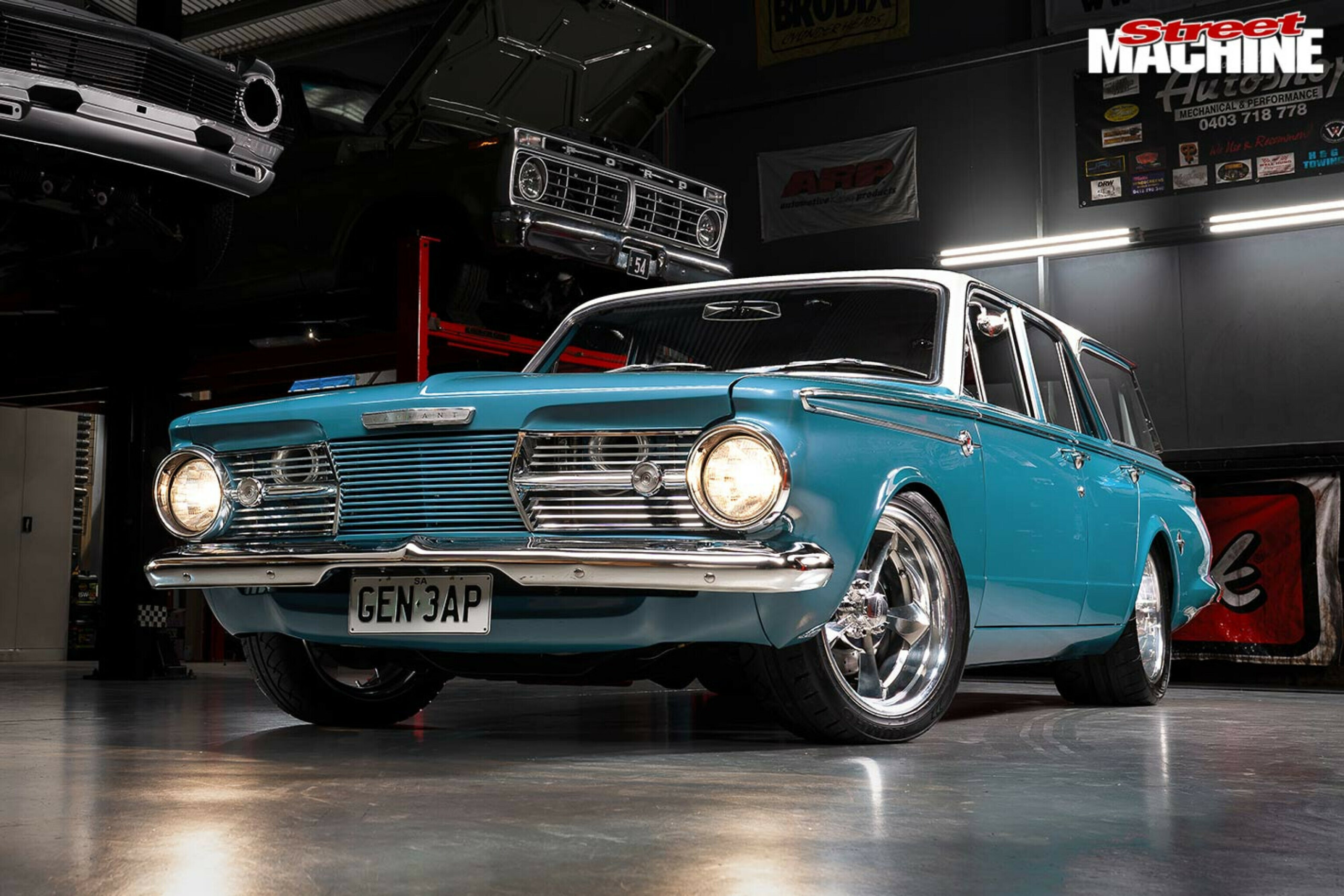
WITH LS and Barra engines regularly being slotted into cars of all makes and models right across the country, it’s refreshing to behold a late-model Hemi that’s been shoehorned into a classic car of the same lineage. “I’m pretty sure it’s the first AP with this powertrain,” says Mick Cox, owner of the 5.7-litre, Hemi V8-powered ’65 AP6 Safari wagon in question.
This article was first published in the April 2020 issue of Street Machine
Mick’s a Valiant lad through and through, having grown up with the Aussie Pentastar breed in the town that manufactured them, Adelaide. “I have good memories of my parents’ mint AP5 Regal wagon, followed by a baby-blue ex-cop VK Valiant 318ci sedan,” he recalls.
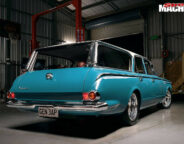
Spurred along by partner Tina, Mick was keen to have a Chrysler of his own after decades in wait. You see, Tina happens to have an AP6, which Mick was keen to modify but she wasn’t. “So I waited until family life got a little less hectic to find a project of my own – a Chrysler station wagon with modern running gear added, yet keeping the old-school look,” he explains. “Something that we could throw the swag and Esky into without worrying about reliability.” Or the purists’ tears, no doubt.
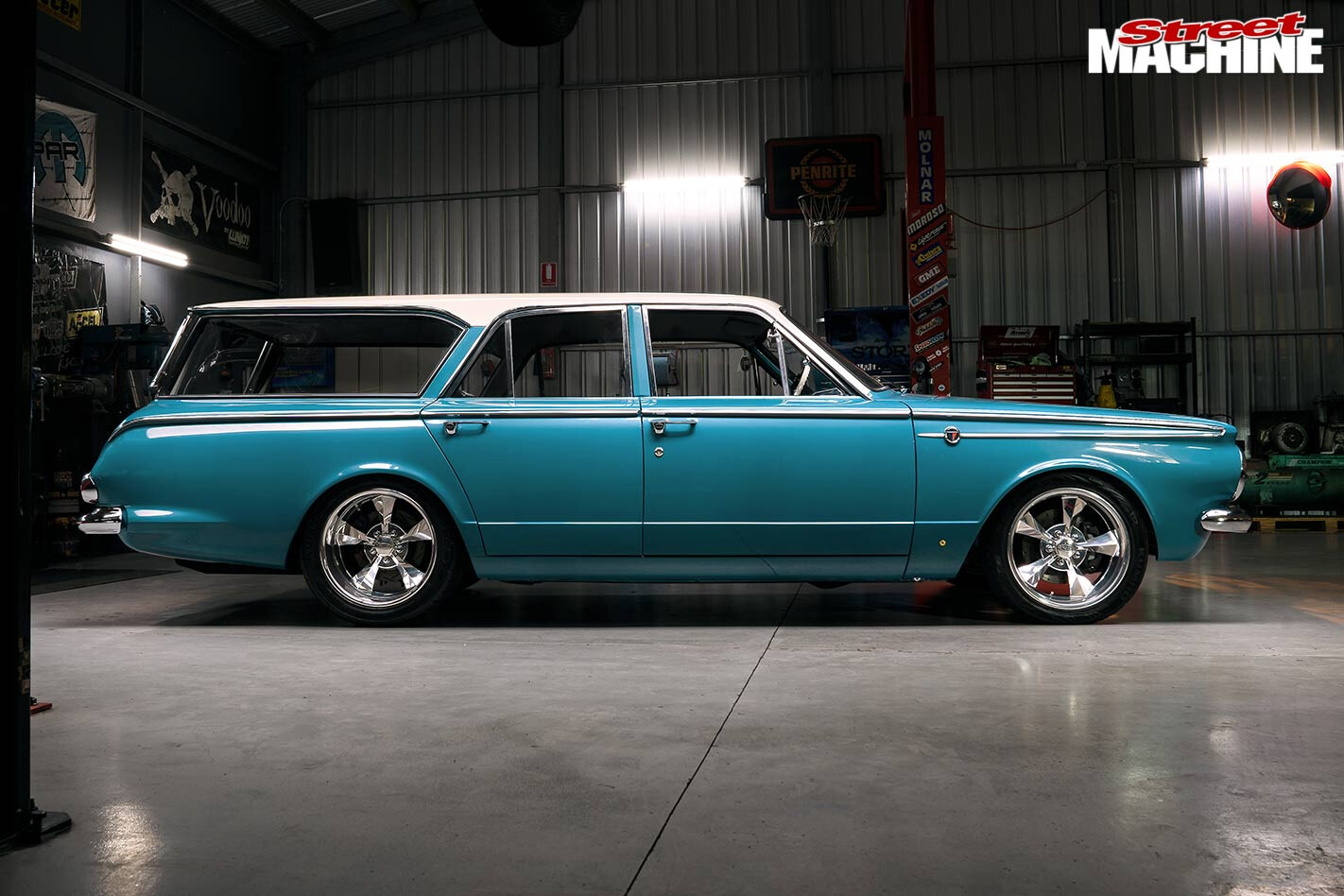
“The body was in excellent original condition,” Mick says. “No rust was evident, and the spare wheel well was perfect; someone had put old newspapers in there to absorb any moisture”
Mick first spotted the factory blue-over-white wags tucked beneath a carport six years ago, so he knocked on the front door for a yarn and a gander. The bloke had purchased the AP6 from its original owner, albeit with the slant-six on the wrong side of the engine bay. Apart from that, it was a complete car.
“It was in excellent factory condition, and it had the original owner’s manual and car-care book,” says Mick. “The AP6 was first owned by a worker at the Tonsley plant, bought through a Chrysler employee scheme.”
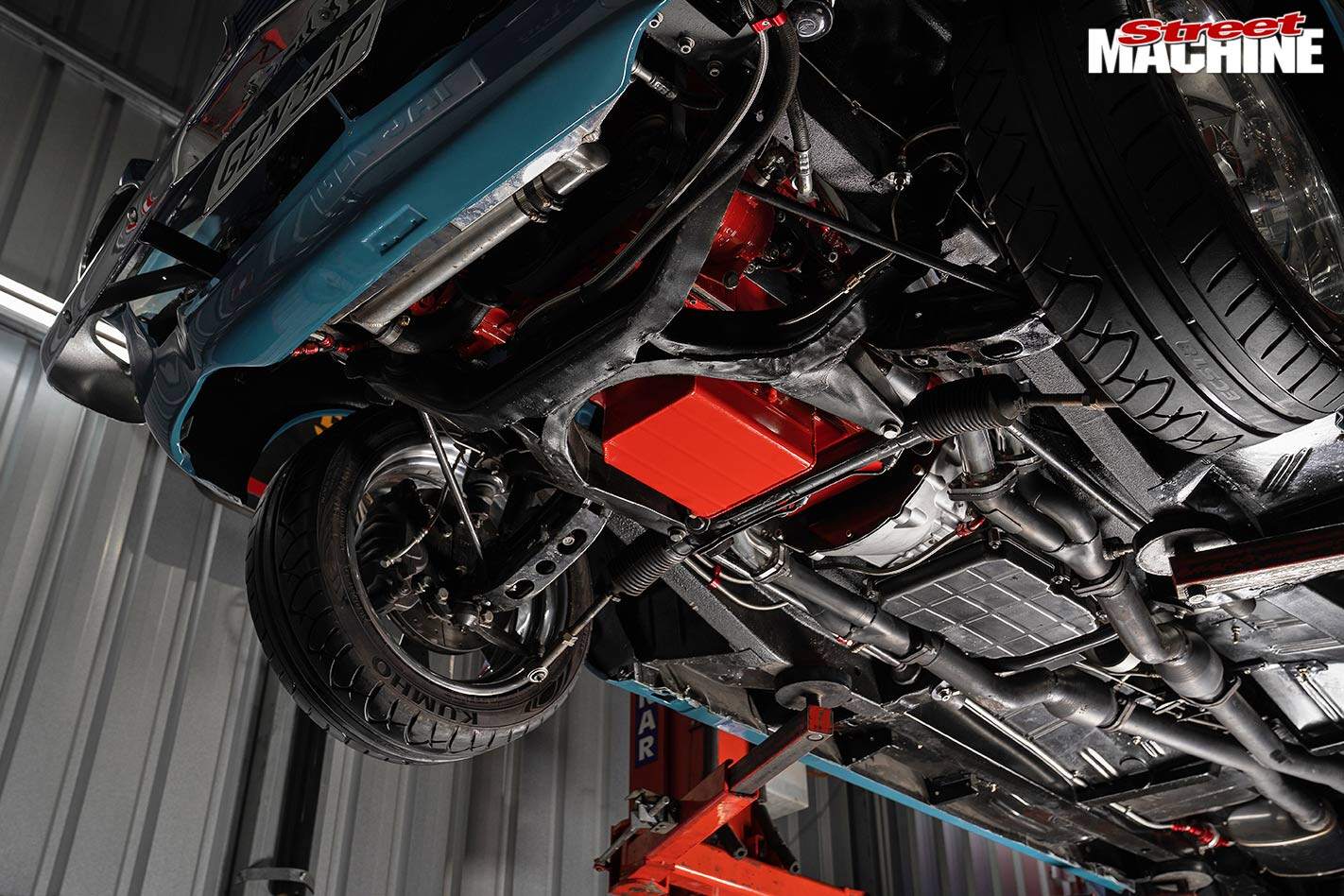
StubTech 50mm drop spindles lower the wagon nicely. Rearward, the reset factory springs have been moved inboard to allow for the tubs and wider tyres, and are paired with QA1 double-adjustable shocks
Yet while the Val had a sterling pedigree, Mick remained steadfast on the mods he desired. “I loved the idea of running a Chrysler 300C 5.7-litre Hemi with a five-speed auto for highway travelling,” he says.
Jason Riding of Lonsdale Autoshop was entrusted with the build and was a keen backer of Mick’s fresh Aussie pro tourer idea. Jason did a fair whack of the grunt work in-house while project managing the rest of the build, incorporating a bunch of quality local businesses.
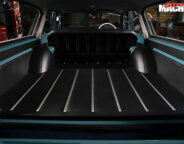
Slotting a powerful injected donk and transmission into a small-bodied 60s car required a crap-tonne of modifications and upgrades. The rest of the driveline and suspension needed to be readied for the higher-output powertrain. It also needed to be able to get the power to the ground without turning the AP6 inside out.
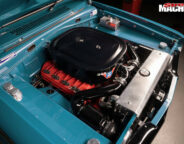
The late-model 5.7L Gen 3 Hemi produces good power in standard form, though Mick says he may add a supercharger down the track. A TS Astra electric power steering pump and twin remote brake boosters reside under the front guards, while the Wilwood twin master cylinder is concealed beneath the dash
From factory, the slant-six offered 145hp, while Mick reckons his Hemi will eventually pump out 400hp with a hefty 500Nm of torque. To strengthen the factory frame, chassis connectors have been welded in to form a rigid base. For the new additions, a widened tunnel has been added for the larger five-speed NAG1 trans, while up the back, mini-tubs were a necessity for the 10in-wide Dragways that Mick was dead keen on.
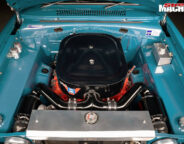
Mick has two intake systems: an old-school bug-catcher and a slick modern under-bonnet set-up. Dan from Tuff Customs Fabrication & Performance Parts is responsible for most of the fab work, including the clever dummy air cleaner that also hides the EFI gear. The engine bay is smooth, modern yet era-appropriate thanks to factory-style engine paint
Each of these alterations was relatively straightforward compared to fitting the behemoth Hemi into a tight engine bay. “The Hemi fits with millimetres to spare,” Mick says. Making room for the sizable addition forced many necessities to go on a diet or depart their existing locations (see engine caption p. 85).
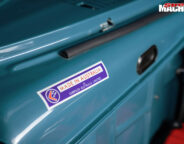
Mick has kept with the factory paint scheme, yet added some bling to the PPG mix. “Trav from Warehouse 27 Automotive Refinishing added pearl to the original blue, which modernises it somewhat,” he says. “After seeing Trav’s paint on Charlie Beatty’s green Centura (SM, Feb ’18), it was a no-brainer that he would get my job, and he didn’t disappoint.”
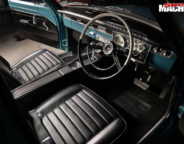
The mint factory interior was swapped out for Mick’s preferred set-up. He’s retained early Valiant trimmings such as the loop-pile carpet and vinyl, yet mixed it up with VC front pews and console, headed by a Regal tiller. Modern equipment is hidden throughout, with Vintage Air a/c, USB plugs, cup holders and a stereo system including an amp and sub
While Summernats 33 was locked and loaded for the AP6’s debut a year out, the months evaporated quickly. “It was at the painter longer than expected,” Mick shrugs. “That gave Ben from Elite Trim limited time, yet what he delivered was amazing.” Ben revamped the VC buckets and console, fabricated a custom rear pew and restored the door cards and dash, all in a factory-black theme.
“By Summernats, the AP6 still wasn’t 100 per cent finished, so we towed it there – and we had a ball,” Mick smiles. “Next, we’re driving the wags to Chryslers On The Murray to participate in the driving events and show the complete car for the first time. I can’t wait to see the difference between the modified enthusiasts’ and the purists’ reactions!
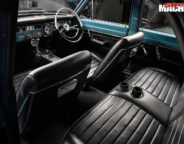
“I believe some will be impressed and others not so much,” Mick continues, “but for me it’s turned out perfect in every way. To be honest, the car got better and better through the build; I didn’t expect it this good. I wouldn’t change a thing!”
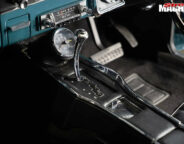
MICK COX 1965 AP6 VALIANT SAFARI WAGON
Paint: PPG factory blue with custom pearl clear, white roof
ENGINE Brand: Chrysler Hemi 5.7L Fuel system: Aeromotive in-tank fuel pump, PULP Cooling: PWR radiator with SPAL fans Exhaust: Custom extractors with high-flow cats, twin 2.5in sports exhaust Ignition: Standard coils, relocated Power: 250rwhp
DRIVELINE Trans: NAG1 Mercedes five-speed Converter: Stock Tailshaft: Custom two-piece Diff: 9in, 3.89:1 gears, Truetrac, 31-spline Moser axles
SUSPENSION & BRAKES Front: StubTech lowered drop spindles, Monroe Sports shocks Rear: Standard springs, QA1 double-adjustable shocks Steering: Pentastar Parts & Restorations rack-and-pinion, TS Astra electric power steering pump Brakes: BA V8 rotors and calipers (f & r) Master cylinder: Wilwood twin master, twin remote boosters
WHEELS & TYRES Rims: Custom-ordered Dragway billet DB143; 17×7 (f), 17×10 (r) Tyres: Kumho; 215/45 (f), 315/35 (r)
THANKS Tina for supporting my passion; Jason at Lonsdale Autoshop for building and project managing my dream car; Trav and Pete at Warehouse 27; Ben at Elite Trim; Adam at Southern Classics & Customs; Brett at Southern Steering & Suspension; Chris at CK Racing; Carmine at CDS; Damon at South Coast Exhausts; Grant form Dynotronics Tuning; Dan at Tuff Customs Fabrication & Performance Parts; Steve at Shimtech; Mike at MV Automatics; Davor at Performance Auto & Dyno
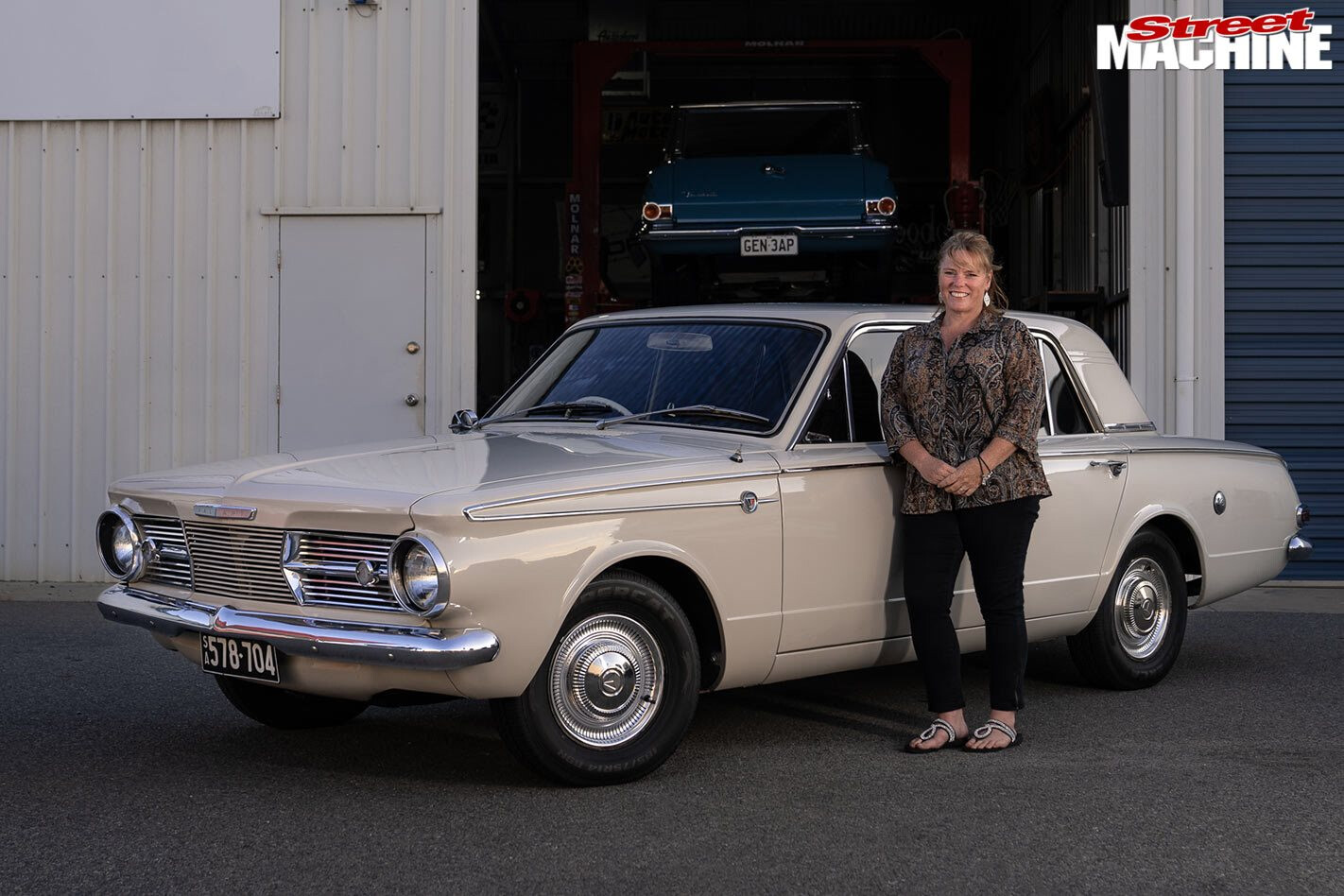
Tina Wright’s Chrysler P6 Valiant
Tina Wright is part of a rare breed that still owns their first car after 30 years
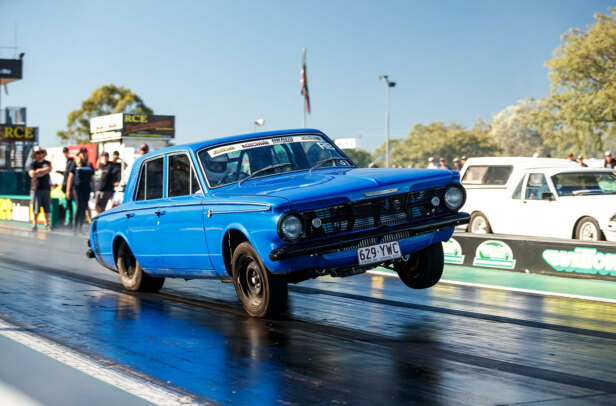
LS1-powered 1963 Chrysler AP6 Valiant
Patrick Lawler and his mates built a Drag Challenge weapon to rile up the purists
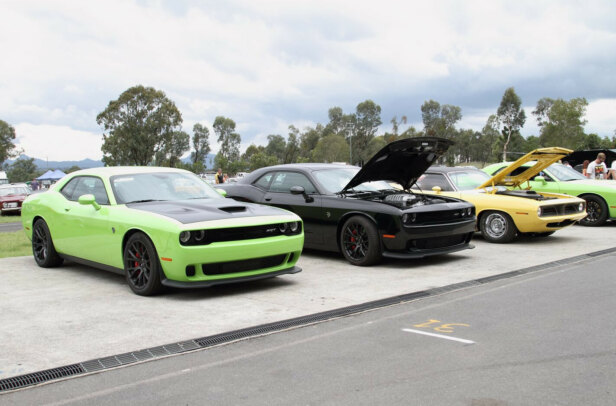
MOPAR SUNDAY 2015, MORE RAIN, STILL COOL
Rain ended play early at Mopar Sunday but that didn't stop us from having a good time

Current time by city
For example, New York
Current time by country
For example, Japan
Time difference
For example, London
For example, Dubai
Coordinates
For example, Hong Kong
For example, Delhi
For example, Sydney
Geographic coordinates of Elektrostal, Moscow Oblast, Russia
City coordinates
Coordinates of Elektrostal in decimal degrees
Coordinates of elektrostal in degrees and decimal minutes, utm coordinates of elektrostal, geographic coordinate systems.
WGS 84 coordinate reference system is the latest revision of the World Geodetic System, which is used in mapping and navigation, including GPS satellite navigation system (the Global Positioning System).
Geographic coordinates (latitude and longitude) define a position on the Earth’s surface. Coordinates are angular units. The canonical form of latitude and longitude representation uses degrees (°), minutes (′), and seconds (″). GPS systems widely use coordinates in degrees and decimal minutes, or in decimal degrees.
Latitude varies from −90° to 90°. The latitude of the Equator is 0°; the latitude of the South Pole is −90°; the latitude of the North Pole is 90°. Positive latitude values correspond to the geographic locations north of the Equator (abbrev. N). Negative latitude values correspond to the geographic locations south of the Equator (abbrev. S).
Longitude is counted from the prime meridian ( IERS Reference Meridian for WGS 84) and varies from −180° to 180°. Positive longitude values correspond to the geographic locations east of the prime meridian (abbrev. E). Negative longitude values correspond to the geographic locations west of the prime meridian (abbrev. W).
UTM or Universal Transverse Mercator coordinate system divides the Earth’s surface into 60 longitudinal zones. The coordinates of a location within each zone are defined as a planar coordinate pair related to the intersection of the equator and the zone’s central meridian, and measured in meters.
Elevation above sea level is a measure of a geographic location’s height. We are using the global digital elevation model GTOPO30 .
The Unique Burial of a Child of Early Scythian Time at the Cemetery of Saryg-Bulun (Tuva)
<< Previous page
Pages: 379-406
In 1988, the Tuvan Archaeological Expedition (led by M. E. Kilunovskaya and V. A. Semenov) discovered a unique burial of the early Iron Age at Saryg-Bulun in Central Tuva. There are two burial mounds of the Aldy-Bel culture dated by 7th century BC. Within the barrows, which adjoined one another, forming a figure-of-eight, there were discovered 7 burials, from which a representative collection of artifacts was recovered. Burial 5 was the most unique, it was found in a coffin made of a larch trunk, with a tightly closed lid. Due to the preservative properties of larch and lack of air access, the coffin contained a well-preserved mummy of a child with an accompanying set of grave goods. The interred individual retained the skin on his face and had a leather headdress painted with red pigment and a coat, sewn from jerboa fur. The coat was belted with a leather belt with bronze ornaments and buckles. Besides that, a leather quiver with arrows with the shafts decorated with painted ornaments, fully preserved battle pick and a bow were buried in the coffin. Unexpectedly, the full-genomic analysis, showed that the individual was female. This fact opens a new aspect in the study of the social history of the Scythian society and perhaps brings us back to the myth of the Amazons, discussed by Herodotus. Of course, this discovery is unique in its preservation for the Scythian culture of Tuva and requires careful study and conservation.
Keywords: Tuva, Early Iron Age, early Scythian period, Aldy-Bel culture, barrow, burial in the coffin, mummy, full genome sequencing, aDNA
Information about authors: Marina Kilunovskaya (Saint Petersburg, Russian Federation). Candidate of Historical Sciences. Institute for the History of Material Culture of the Russian Academy of Sciences. Dvortsovaya Emb., 18, Saint Petersburg, 191186, Russian Federation E-mail: [email protected] Vladimir Semenov (Saint Petersburg, Russian Federation). Candidate of Historical Sciences. Institute for the History of Material Culture of the Russian Academy of Sciences. Dvortsovaya Emb., 18, Saint Petersburg, 191186, Russian Federation E-mail: [email protected] Varvara Busova (Moscow, Russian Federation). (Saint Petersburg, Russian Federation). Institute for the History of Material Culture of the Russian Academy of Sciences. Dvortsovaya Emb., 18, Saint Petersburg, 191186, Russian Federation E-mail: [email protected] Kharis Mustafin (Moscow, Russian Federation). Candidate of Technical Sciences. Moscow Institute of Physics and Technology. Institutsky Lane, 9, Dolgoprudny, 141701, Moscow Oblast, Russian Federation E-mail: [email protected] Irina Alborova (Moscow, Russian Federation). Candidate of Biological Sciences. Moscow Institute of Physics and Technology. Institutsky Lane, 9, Dolgoprudny, 141701, Moscow Oblast, Russian Federation E-mail: [email protected] Alina Matzvai (Moscow, Russian Federation). Moscow Institute of Physics and Technology. Institutsky Lane, 9, Dolgoprudny, 141701, Moscow Oblast, Russian Federation E-mail: [email protected]
Shopping Cart Items: 0 Cart Total: 0,00 € place your order
Price pdf version
student - 2,75 € individual - 3,00 € institutional - 7,00 €

Copyright В© 1999-2022. Stratum Publishing House

COMMENTS
Chrysler AP5 Valiant Safari wagon - early build version using US 1963 Plymouth Valiant horizontal style tail lights. Note amber turn signal lenses incorporated to comply with Australian regulations. Chrysler AP5 Valiant Safari wagon - later build version using US 1964 Plymouth Valiant vertical style tail lights with amber turn signals ...
Valiant Safari (wagon) bodies for Australia were sourced from North America through partway into AP6 production. The '63-'64 AP5 model's Safari initially had horizontal taillights the same size and shape as the US '63 Valiant wagon, with an amber turn signal lens instead of the US colourless reversing lamp lens.
In November 1963 an AP5 Safari station wagon was released. Total production of the AP5 range amounted to 49,440 vehicles. AP6 Series. AP6 Valiant Regal sedan AP6 Valiant Regal Sedan AP6 Valiant Safari Wagon. In March 1965, the AP5 was supplanted ...
WHAT, WHERE, WHEN & HOW MUCH Model: Valiant AP5 Regal Safari Year: 1964 Dealer: JBC Cars 399 Gympie St, Strathpine, QLD, 4500 Ph: (07) 3205 2366. Price: $13,995 0-100 kph: About 16 seconds Best point: Very well presented wagon Worst point:. . . but still a wagon Recommendation: One for the Chrysler fan to take on his/her own Safari!
Now over 50 years old, this humble Valiant AP5 wagon looks like an enduring little battler. It's a 1964 model complete with spats, blinds and visor. It's still got its slant-six with manual three-speed transmission. The seller states that the car "runs really well", frequently making the trip from Byron to Brisbane completely reliably and ...
As with the previous AP5 model, station wagon rear styling varied depending on production dates. Early build wagons used 1965 US Plymouth Valiant wagon-style tail lights. ... A V8 sedan and V8 Safari wagon were offered, both powered by a 273 cu in (4.5 L) V8 engine with "TorqueFlite 8" automatic transmission.
This is a 1964 Chrysler Valiant AP5 Safari, which runs the 225ci (3.7lt) Slant Six combined with a push-button three-speed auto. History says that's a robust and fairly simple combination. Overall it seems to be in decent condition and the inspection report from auctioneer Shannons suggests that it's pretty good on the mechanical front.
Mid 1963 brought the AP5 Valiant, with a lot more local content and manufacturing, including the body. A new purpose built factory was commissioned for this model, and the range grew. The AP5 was now also available in a more luxurious Regal trim, and a station wagon known as the Safari.
1963 Chrysler AP5 Valiant Regal Safari station wagon (5200698427).jpg 2,816 × 2,112; 740 KB 1963 Chrysler AP5 Valiant Regal Safari station wagon (5201307094).jpg 2,816 × 2,112; 794 KB 1963 Chrysler AP5 Valiant Regal sedan (8184627313).jpg 2,560 × 1,920; 2.19 MB
The Slant 6 driveline was retained, but the AP5 was considerably more straightforward in styling than its R- and S-model antecedents. With high local content and specifications optimised for local conditions, this new Valiant strengthened the brand's position in the marketplace. In November 1963 an AP5 Safari station wagon was released.
65 AP5 Valiant Regal Safari, beautifully restored and customise by Royalz Restorationz
The picture titled "AP5 wagon (possibly with modified tail lights)" is in fact an AP6 as it has the raised spear profile on the front fenders. Tailights on AP6 Safari wagons are a bit confusing because some used Canadian round lights which were later replaced with vertical lights as seen on the VC wagons and utes and AP6 utes.
Seller's Description. Slant 225, runs on petrol, 6 cylinders, 6 seats, green colour and white roof, red interior, currently registered, selling unregistered, plates not included but are for sale separately, only keen buyers, no time wasters. Phone after 3pm. Click to find out more about this 1963 chrysler regal ap5 safari wagon sold in ...
1965 AP6 VALIANT SAFARI WAGON. Paint: PPG factory blue with custom pearl clear, white roof. ENGINE. Brand: Chrysler Hemi 5.7L. Fuel system: Aeromotive in-tank fuel pump, PULP. Cooling: PWR radiator with SPAL fans. Exhaust: Custom extractors with high-flow cats, twin 2.5in sports exhaust.
The AP5 was better looking than the EH Holden and XL Falcon — its two main competitors. 1963 Valiant Regal Safari wagon. Like the EH and Falcon, it was designed in the USA. It was a variation on the 1963 US Plymouth Signet and Dodge Dart. The AP5's panels were flatter than its American counterparts and there was less bling.
A 1964 Chrysler AP5 Valiant Safari Wagon that was parked in a shed a local farm. Taken near Jeparit, Victoria in 2014.
Barry McLean's AP5 Safari Wagon Gallery: Members' Rides Description: Valiant AP5, Safari Wagon, Originally purchased from Austral motors Brisbane on the 4/8/1964, I have all the paperwork including the original Receipt. We bought the car from the original owners Son in 1995. The AP5 had front End damage and considerable rust when I purchase it and Repairs were made to get it roadworthy.
Slant 225 push button auto Please text Jeff on 0419321338 for anymore info cheers
This Valiant AP6 Safari wagon wraps a modern 5.7-litre Hemi in classic old-school clothing. WITH LS and Barra engines regularly being slotted into cars of all makes and models right across the country, it's refreshing to behold a late-model Hemi that's been shoehorned into a classic car of the same lineage. "I'm pretty sure it's the ...
Geographic coordinates of Elektrostal, Moscow Oblast, Russia in WGS 84 coordinate system which is a standard in cartography, geodesy, and navigation, including Global Positioning System (GPS). Latitude of Elektrostal, longitude of Elektrostal, elevation above sea level of Elektrostal.
In 1938, it was granted town status. [citation needed]Administrative and municipal status. Within the framework of administrative divisions, it is incorporated as Elektrostal City Under Oblast Jurisdiction—an administrative unit with the status equal to that of the districts. As a municipal division, Elektrostal City Under Oblast Jurisdiction is incorporated as Elektrostal Urban Okrug.
Burial 5 was the most unique, it was found in a coffin made of a larch trunk, with a tightly closed lid. Due to the preservative properties of larch and lack of air access, the coffin contained a well-preserved mummy of a child with an accompanying set of grave goods. The interred individual retained the skin on his face and had a leather ...
Main page; Contents; Current events; Random article; About Wikipedia; Contact us; Donate; Pages for logged out editors learn more